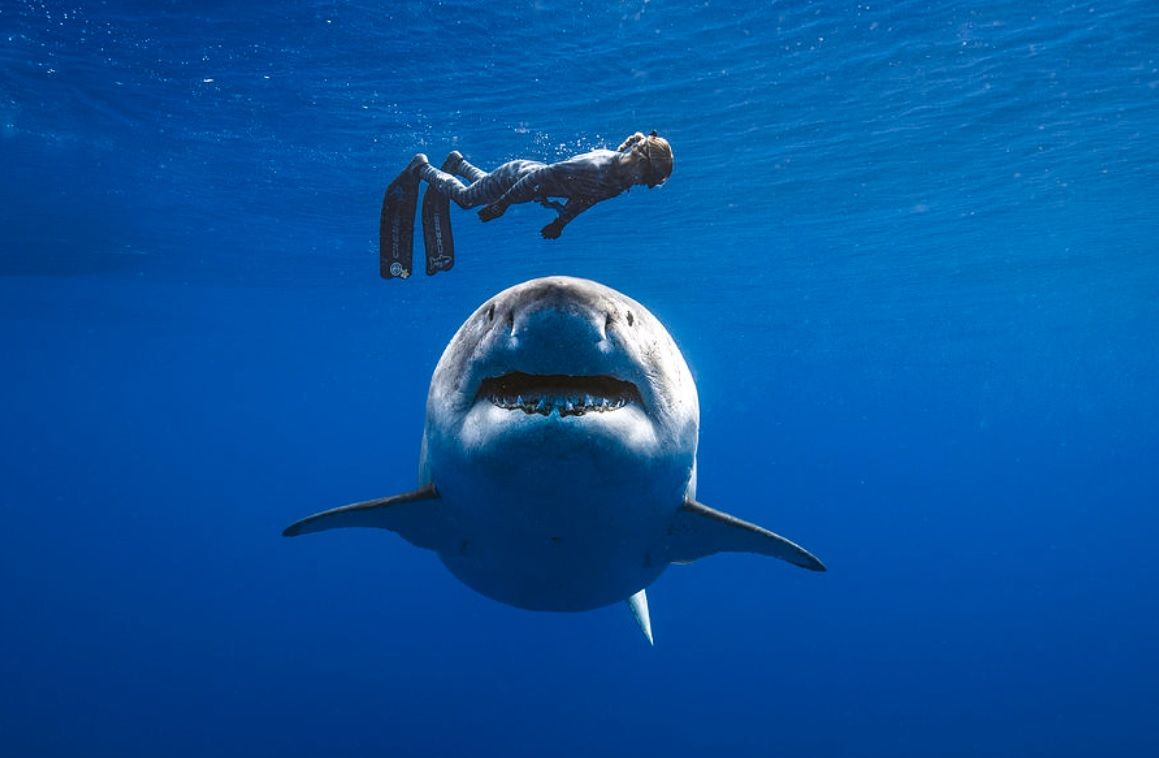The deep blue great white shark is a majestic creature that captures the imagination of marine enthusiasts and casual observers alike. Known for its impressive size and undeniable beauty, this apex predator reigns supreme in the ocean depths. While many have heard of the great white, the term "deep blue" refers to an extraordinary individual that has gained notoriety for its massive size and striking appearance. The phenomenon of deep blue great white has sparked curiosity and intrigue, leading to numerous documentaries, articles, and discussions about this awe-inspiring creature.
The deep blue great white is not just any shark; it is a symbol of the ocean's wild, untamed nature. These majestic creatures can reach lengths of over 20 feet, and deep blue is believed to be one of the largest great whites ever recorded. With a life span that can exceed 70 years, great whites are not only impressive in size but also in their ability to adapt and thrive in various marine environments. Understanding the deep blue great white involves delving into its habitat, behavior, and the conservation efforts surrounding these magnificent animals.
As we embark on this exploration of the deep blue great white, we will uncover fascinating insights into its biology, the threats it faces, and the efforts being made to protect it. Along the way, we will address some common questions about this extraordinary shark, providing a comprehensive look at its life, habits, and the ongoing fascination it inspires.
What is the Biography of the Deep Blue Great White?
The deep blue great white is an iconic figure in the oceanic world. It was first spotted off the coast of Mexico in 2013 and quickly captured the attention of marine biologists and shark enthusiasts. This particular great white shark was tagged and monitored as part of ongoing research to understand the behavior and migration patterns of these powerful predators.
| Personal Details | Bio Data |
|---|---|
| Name | Deep Blue |
| Species | Great White Shark |
| Estimated Length | 20+ feet |
| Weight | Over 2,300 pounds |
| Discovered | 2013 |
| Location | Coast of Mexico |
Why is the Deep Blue Great White Significant?
The deep blue great white is significant not only for its size but also for its role in marine ecosystems. As an apex predator, it helps maintain the balance of marine life by regulating the populations of other species. This ecological role is crucial for healthy ocean environments. Additionally, deep blue has become a symbol of shark conservation efforts, drawing attention to the threats that these magnificent creatures face due to overfishing, habitat loss, and climate change.
What Are the Unique Features of the Deep Blue Great White?
The deep blue great white stands out among its peers due to several unique features:
- Size: Deep blue is one of the largest great whites ever recorded, measuring over 20 feet in length.
- Coloration: The deep blue great white has a distinct coloration that helps it blend into the deep ocean waters, making it an effective predator.
- Age: With an estimated age of over 50 years, deep blue represents the longevity and resilience of great whites.
How Does the Deep Blue Great White Behave?
The behavior of the deep blue great white is as fascinating as its physical attributes. These sharks are known for their intelligence and complex social structures. They exhibit a range of behaviors, including:
- Hunting Techniques: Deep blue employs a unique hunting strategy, often ambushing prey from below.
- Migration Patterns: Great whites, including deep blue, are known to migrate over long distances in search of food and breeding grounds.
- Social Interaction: Although often solitary, deep blue may engage in social behavior with other great whites during specific times of the year.
What Threats Does the Deep Blue Great White Face?
Despite its status as an apex predator, the deep blue great white faces numerous threats that jeopardize its survival. These threats include:
- Overfishing: Targeted fishing and bycatch in commercial fisheries significantly impact great white populations.
- Habitat Loss: Coastal development and pollution threaten the habitats essential for breeding and feeding.
- Climate Change: Changes in ocean temperature and acidity can disrupt food sources and migration patterns.
How Are Conservation Efforts Addressing These Threats?
In response to the threats facing great whites, various conservation efforts have been implemented to protect this iconic species:
- Marine Protected Areas: Establishing protected zones helps safeguard critical habitats from fishing and development.
- Research and Monitoring: Ongoing research initiatives, including tagging and tracking, provide valuable data on great white behavior and migration.
- Public Awareness Campaigns: Educating the public about the importance of sharks and their ecosystems fosters support for conservation efforts.
What Can We Do to Help the Deep Blue Great White?
As individuals, there are several ways we can contribute to the conservation of the deep blue great white and its habitat:
- Advocate for Sustainable Practices: Support sustainable seafood choices and advocate for responsible fishing practices.
- Participate in Clean-Up Efforts: Engage in local beach and ocean clean-up initiatives to reduce pollution.
- Raise Awareness: Share information about great whites and their conservation needs with friends and family.
Conclusion: The Deep Blue Great White and Its Future
The deep blue great white is a remarkable symbol of the ocean's majesty and the importance of conservation. As we continue to learn more about this incredible shark and the role it plays in marine ecosystems, we must also recognize the challenges it faces. Through combined efforts in research, education, and advocacy, we can work towards a future where the deep blue great white thrives in its natural habitat, inspiring generations to come.
Experience Luxury And Comfort At Rosen Plaza International
Discovering The Charm Of West Caln Township, Pennsylvania
Discovering The Culinary Delights Of Mary's Kitchen Port In Traverse City


